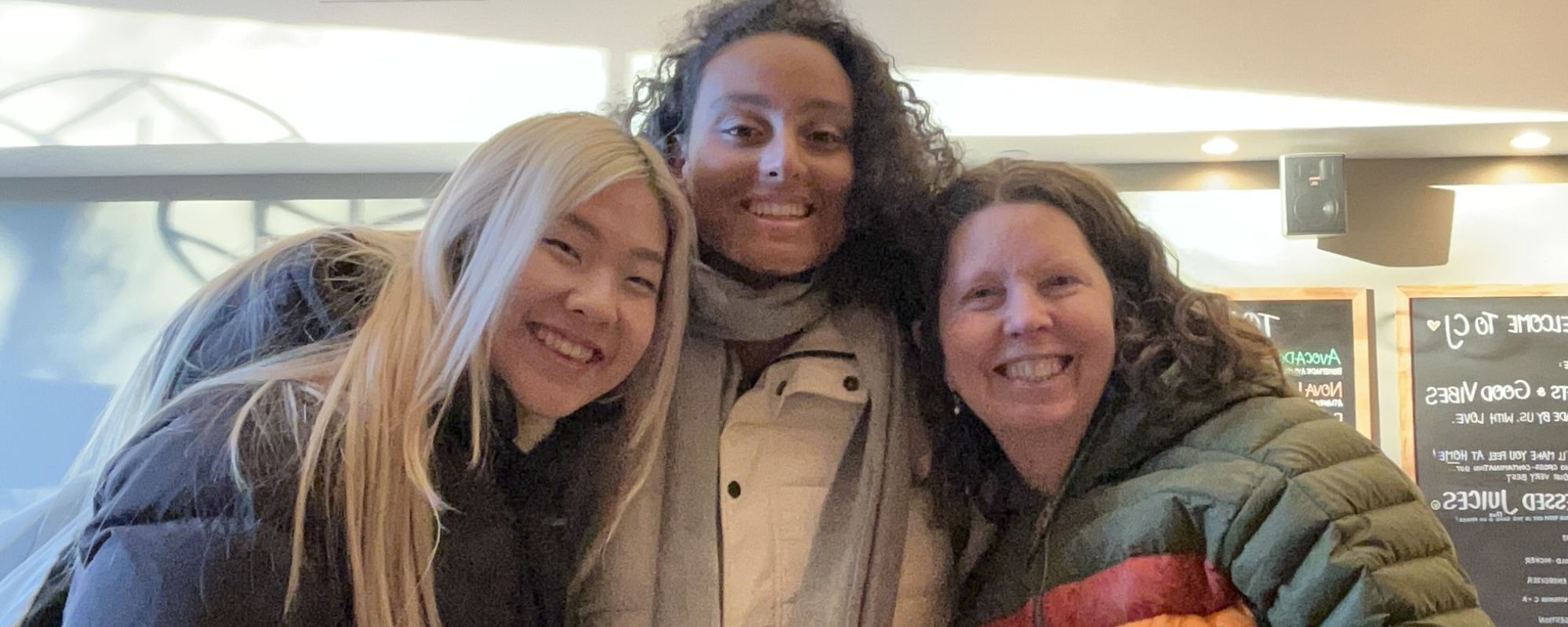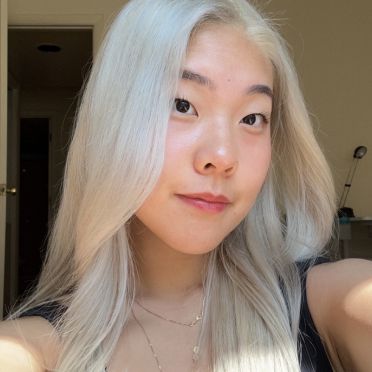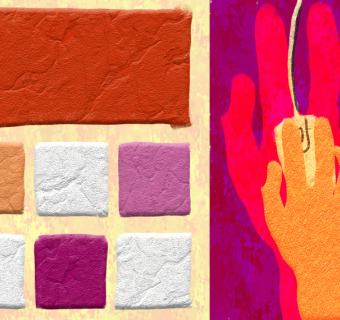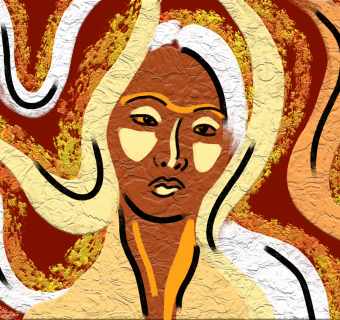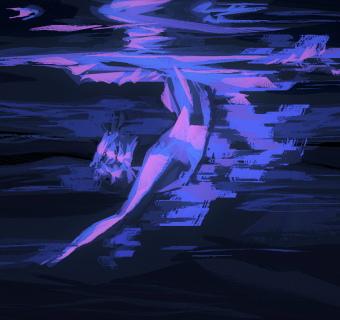I draw a long breath. Newness reverberates against my bones, as I stretch my neck to ease the tension of its twisted sinews. I close my eyes and fumble around my keypad before successfully pressing play. I try to ease my mind, so that I can truly drink in the thick luxury of Randall Jarrell’s transatlantic accent as he reads Elizabeth Bishop’s “The Fish”—my desperate attempt to bridge the forty years lived experience between Mary Esselman and I.
As a twenty year old college student, who mentally still feels seventeen and regularly feels lost and alone, I eagerly grasped at Mary’s wisdom to rely on the perceptive insights of past writers and poets in times of need. She imagines all her favorite writers at a celebratory dinner party, all her most shrewd friends gathered around warm candlelight to give their two cents.
“I really believe that poetry might help people feel better about life,” she insists. “That if you presented [poetry] in a way that was accessible, it could really change. It could really change things for them for the better.”
Mary has lived many lives,... but I find her here today, as the living backbone of Iris—or more formally known as Iris Magazine’s program coordinator and editor.
With wild curls and a smile like sunshine, I can’t help but smile in return. Mary’s jubilant energy is always contagious, just as her words are always reassuring. And you can always count on her for sage advice. Mary has lived many lives, as a journalist for People magazine, a Georgetown University professor, a Discovery Channel documentarian, and a poetry anthologist, but I find her here today, as the living backbone of Iris—or more formally known as Iris Magazine’s program coordinator and editor.
But Mary truly does know firsthand how poetry can alter lives, not only from assembling a few poetry anthologies of her own (not that she’ll ever brag about it), but also because of her own intimacy with her favorite poem, “The Fish.”
So as I begin my meager attempt to distill Mary into a single piece—nothing short of a Goliathan task—I look to Bishop as a lighthouse, in hopes of unearthing the same guidance and solace that college-aged Mary found the first time she read “The Fish” too. I hoped to understand how this poem served as a sword and shield that pushed her to valiantly brave the trials of life, and win battles against broken hearts, career changes, motherhood, womanhood, and grief.
I remembered, a writer is best reflected through their words, not another’s, and Mary is no exception—even if she doesn’t consider herself one.
But even as I played Randall Jarrell’s recording for the third time—his rhythmic lyricism beating in my ear and echoing down my spine—it didn’t quite click. I had imagined that the poem was imbued with some magical spell and that Bishop would whisper the same secrets of living that she had into Mary’s ear into my own, but nothing of the sort happened. I was still left the same twenty year old, stuck and afraid, asking "Who is Mary?"
It was only until I read Mary’s piece “‘The Fish,’ A Love Story,” which is dedicated to her best friend Meg who she cared for until her passing, that Bishop finally felt like living flesh. I remembered, a writer is best reflected through their words, not another’s, and Mary is no exception—even if she doesn’t consider herself one.
“To say I'm a writer, to make it a part of the identity was a harder stretch for me…I thought there had to be more discipline and craft involved if you wanted to be a really good writer…[I thought] that if I kept learning more about the craft, then I would be qualified…Then I could say, ‘I’m a writer.’”
Good writing bridges not only time, but also the gaps between feelings.
But as you read Mary’s writing about grief, love, aging, and friendship, anyone can recognize Mary as a writer—and a good one at that. I imagine that what I am feeling now at twenty is what Mary first felt when she fell in love with Bishop in college. Good writing bridges not only time, but also the gaps between feelings. Though I know little about grief, loss, and true heartbreak, I can understand the gravity of girlhood and triumph in finding someone to brave womanhood by your side.
When I return to Bishop for the fourth time, this time without Jarrell, I wonder how I never noticed Mary and Meg peeking through the letters, swimming through the smudges of oil alongside Bishop’s fish, and calling attention to the beauty of the “rainbow, rainbow, rainbow!”
"Poetry and literature and words, these are things that can help us find meaning. Meg, you know, would be like ‘Oh brother, I’m so glad my death gave you meaning,’” she says, rolling her eyes with a soft smile.
“I didn’t have much doubt about that [piece] when I was done because it felt like using Bishop’s words helped elevate it somehow—made it good enough, more than if it had just been my words,” Mary says, reminiscing on her relationship to Meg and Bishop (though I know it would’ve been great even if she stood alone). “It helped me continue to honor her and our relationship. Poetry and literature and words, these are things that can help us find meaning. Meg, you know, would be like ‘Oh brother, I’m so glad my death gave you meaning,’” she says, rolling her eyes with a soft smile.
“I think she would have loved it,” I assured.
“Yeah, I think so too,” Mary pauses. “Yeah, she’s great. You would have liked her.”
“I wish I could have met her,” I sigh. But it almost feels like I have through the flesh of Mary’s words. When I read about Meg, I think of my own friends who will race over in the middle of the night with a warm hug, a cheap bottle of wine, and a soft roll of toilet paper to soothe my uncontrollable sobs. I think of the friends who rot with me on the couch for endless weeks until the seam between our skin and the fabric of the couch is indecipherable. I think of the friends who will make road trips with me to nowhere, who will bring me a snack when I haven’t yet eaten, who will accompany me to the grocery and to the doctor’s office, who will say yes to anything because it means doing life together.
To tell the story of Mary is to tell the story of all that she loves and has loved in her life—including Iris.
Even if Meg would tease at the thought of being memorialized, I know she would be proud of Mary’s piece. For Mary has an uncanny ability to breathe new life and palpable love into her work and all those around her. To tell the story of Mary is to tell the story of all that she loves and has loved in her life—including Iris.
“Well, [Iris] is certainly one of the best things that's ever happened to me in my life—to be able to work with students like you and…all the people I've met through Iris...It's hard to find in a work environment, the kinds of colleagues that I feel I have with Iris, with the students.”
Mary has always loved mentorship and teaching; working with students is rejuvenating.
“My favorite thing about Iris is the dynamic, generative energy that can bring about hope and freshness—and its lack of adhering to the status quo, or lack of being afraid. The Iris team is not afraid. The Iris team has a voice, individually and collectively, that they are not afraid to use. And that’s the best part of being with them.”
Mary has always been invested in feminism and storytelling as a form of activism.
What Mary does not mention is that she is the well from which our energy as writers spouts. I remember the first time meeting Mary through a Zoom interview with the same genuine smile, ambition, and radical positivity that she has today, and knowing that Iris was the place I had to be.
“[One day,] I want us to be Iris Inc. My dream would be to get you, Kimia, Lexi, and Cady, and many former editors, and Iris writers to form our own creative content agency beyond UVA, beyond the Women's Center.”
Mary has always been ambitious. From working an investigative beat at People, breaking sexual assault cases wide open alongside fellow writers, to unraveling the fate of small American towns following their decimation by the global economy through film making for public television, Mary has always been invested in feminism and storytelling as a form of activism. But most of all she is driven to tell stories because of her dedication to people and to connection.
"Writing...is a way of seeing and being seen, and helping others be seen and see themselves too.”
“Writing to me is just about connecting with the world around me, connecting with words—the playfulness [and] beauty of language—and maybe being able to hold that out there for someone else…It's a way of seeing and being seen, and helping others be seen and see themselves too.”
As I let Mary’s words fill me up once again, I allow myself to transform alongside her, oscillating between both fish and girl. For now Mary has become my Bishop—a beloved writer, mentor, and friend who I will gratefully invite to dinner parties forevermore.

